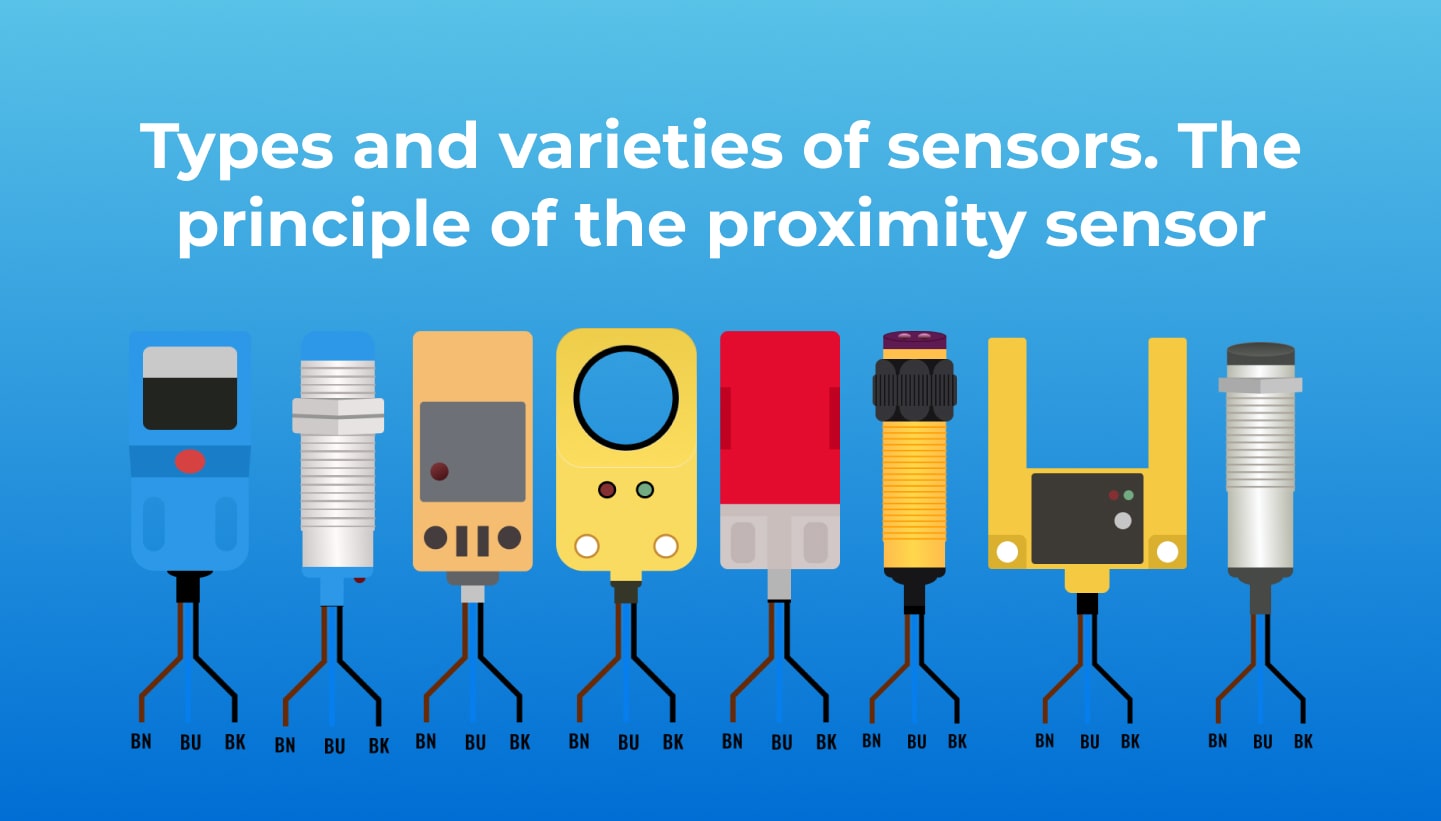Home >
Blog >
Types and varieties of sensors

The industrial electronics particularly widespread sensors. A sensor is an electronic or electromechanical device designed to convert a specific stimulus into an electrical signal.
There are many types of sensors. Let's list the most basic ones:
- 1. Proximity sensor.
Proximity sensor for monitoring the position of a metal object (to other materials is not sensitive).

- 2. Optical sensors.
Electronic devices capable of supplying a single or a set of signals to the input of a recording or control system under the influence of electromagnetic radiation in the visible, infrared and ultraviolet ranges.

- 3. Capacitive sensors.
It works when there is almost any object or substance in the field of activity.

- 4. Limit switches (electrical sensor).
This is a conventional passive switch that is triggered when an object runs over or presses on it.

The principle of the proximity sensor.
The proximity sensor is discrete. The signal at its output appears when metal is present in the specified zone. The proximity sensor is based on a generator with an inductor. When metal appears in the electromagnetic field of the coil, this field changes dramatically, which affects the operation of the circuit.

Proximity sensor field. The metal plate changes the resonant frequency of the oscillating circuit.
Proximity sensor application.
The proximity sensor is widely used in industrial automation to determine the position of a particular part of the mechanism. The signal from the sensor output can go to the input of the controller, frequency converter, relay, starter, and so on. The only condition is compliance with current and voltage.
Design.
There are two main options - cylindrical and rectangular. Other enclosures are rarely used. Body material - metal (various alloys) or plastic.
Number of wires for connection.
2-wire sensors. The sensor is connected directly to the load circuit. Just like we turn on the lights at home. They work poorly at both high and low load resistance.

The load can be connected to any wire, for constant voltage it is important to observe the polarity. For sensors designed to work with alternating voltage, neither load connection nor polarity matters. You don't have to think about how to connect them at all. The main thing is to provide the current.
3-wire sensors. The most common sensors. There are two wires for the power and one for the load.
 4- and 5-wire sensors
4- and 5-wire sensors. This is possible if two outputs are used for the load (for example, PNP and NPN (transistor), or switching (relay). Fifth wire - selection of the operating mode or output state.
Types of sensor outputs by polarity
All discrete sensors can have only 3 types of outputs, depending on the key (output) element:
Relay. The relay switches the required voltage or one of the power wires. This provides complete galvanic isolation from the sensor power supply circuit, which is the main advantage of such a circuit. That is, regardless of the sensor supply voltage, you can turn on / off the load with any voltage. It is mainly used in large size sensors.
Transistor PNP. This is a PNP sensor. The output is a PNP transistor, that is, the positive wire is switched. The load is permanently connected to the minus.
Transistor NPN. The output is an NPN transistor, that is, the “negative” or neutral wire is switched. The load is permanently connected to the “plus”.
There are PNP and NPN sensors. The choice of sensor depends on which type of sensor is supported by your controller.
You can view the connection diagrams for sensors and supported DrufelCNC controllers here.
The difference between PNP and NPN sensors is that they switch different poles of the power supply. PNP (from the word “Positive”) commutes the positive output of the power supply, NPN - negative.










